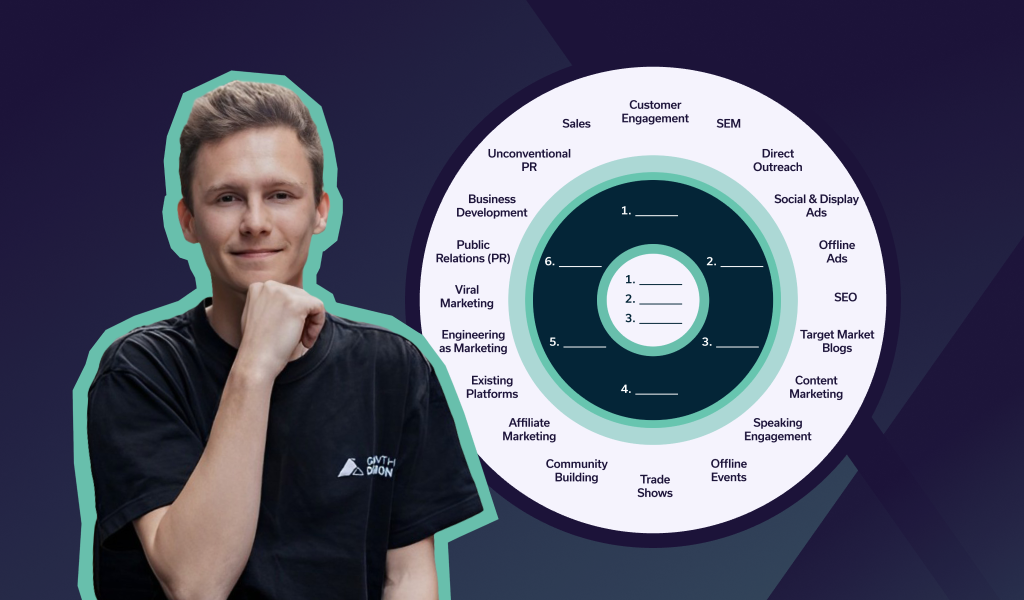Why is launch day so important?
So you’ve started a business and you’re nearing the point where you’re ready to launch. What should you expect to get out of your launch day?
Well, it of course depends on the sector and product type. But fundamentally, your launch day is your chance to leverage the existing buzz among your early adopters to get wider exposure and coverage. It’s your opportunity to take a giant leap towards traction.
It’s important because it can set the tone and morale in your company for months. A successful launch day can energise your team and build confidence that this project they’ve worked so hard on has a good chance of success. Equally, it can give investors more confidence that they’ve backed the right horse and even help attract more investors, if more funding is what you want.
That said, it’s not the be all and end all of your business. Some businesses, especially complicated tech products, are more suited to a graduated launch process - with long periods of beta testing, a soft launch, further testing and product design. In this case, the product can sometimes go without having an official ‘launch’ day at all - because if anything, getting a load of buzz and press coverage too early can be detrimental. So before planning a huge launch day you really need to consider whether you need one at all.
In this blog, we’re going to go through some top tips for building towards a successful launch day.
How to create a successful launch campaign
1. Have a go to market strategy
This is arguably the most important tip of all. It’s vital, before you start thinking about launch day strategies, parties and champagne, that you have a properly researched and scrutinised go to market strategy.
We have written about how to build a go to market strategy in this blog. It comes down to covering four main components:
- The problem - researching your market, identifying and properly defining a market problem that you would like to solve. This shouldn’t just be based on your ‘intuition’ - you should talk to people (potential customers, competitors, experts) to ensure that the problem is real.
- The audience - building personas of who would be interested in your solution. Again, the key is doing real research to understand their pain points.
- The competition - what is the competition doing well and poorly in terms of product and marketing?
- The distribution - how are you going to get your product out there? Including marketing strategy and, if applicable, a launch day plan.
2. Build an email/wait list
You’ve probably heard of the Monzo waiting list. They’re by no means the only example, but they’re probably the most well known. It was a masterclass in using the building of an email list to generate:
- Buzz, excitement and a sense of scarcity
- Virality, by incentivising referrals
- A sense of community
- A ready-made, engaged audience to market to
With a mailing list, you also have a ready cohort of beta testers available to you.
However, it’s not as simple as just setting up a Mailchimp account and putting a ‘join our newsletter’ box on your website. There has to be a REASON for people to join your mailing list. That could be: early access, special offers, insight into the development process, invitations to events. It will very much depend on the product and industry, but you’ll need to come up with some kind of incentive.
3. Keep your early adopters engaged
Once you have a mailing list, wait list or beta testing list, you can’t just spam them with marketing emails and expect them to be excited for launch day. You need to keep them engaged and interested. Some common tactics for this are:
- Don’t email them too often. Once per week should be enough.
- Tease news before you release it. For example: ‘We’ve got some incredibly exciting product news to announce next week, watch this space’.
- Reward them for their early adoption with insights into the development journey, early access etc.
- As Monzo did, reward them for referring friends to the list by pushing them up the queue for product access.
- Don’t email them for the sake of emailing them. Only contact them if you have something to say.
- Create a sense of mystery and buzz around launch day - eg. ‘August is going to be a BIG month for us. We can’t say why yet, but watch this space (PS - keep your diary free on the 16th).’
4. Test, test and test again
This is hugely important. You need to test your product over and over again in the run up to launch day, but it can’t just be your internal team testing because you’ll be too close to the product and won’t have the same perspective as a new user. So you need to get proper beta testers, who are representative of your target market. Throughout testing you should be looking for:
- Bugs and errors
- UI/UX improvement opportunities
- Cross and up-sell opportunities in the user flow.
Now, that’s not to say you should get into an endless cycle of testing to get your product ‘perfect’ before launch. Because it never will be, there will always be issues and unexpected hiccups. There’s a lot to be said for just getting the product out there and making improvements on the fly. However, an under tested product being launched can infuriate early adopters by giving the impression of laziness or incompetence, and those early adopters are often your best chance for early viral growth.
5. Under promise and over deliver
This is one a lot of companies get wrong. If you fail to live up to your promises you’ll irritate your waiting list, early adopters and/or investors, and squander good will.
If that means you don’t announce a product update before it’s ready, so be it. It’s better to surprise your customers with a product improvement out of nowhere than promise one in advance but fail to deliver.
For a start-up, good will is incredibly important. Early adopters will expect things to be clunky and imperfect to start with. They’ll put up with a lot if they believe in the product. But if you constantly fail to meet expectations (especially if you set those expectations), they’ll lose faith that you have the skill or work ethic to deliver the product they were excited about.
6. Cultivate relationships with the press and/or influencers
If you think that by sending a press release to journalists in your space, your launch day will automatically get press coverage, I’ve got a bridge to sell you.
Occasionally, a product is so ground-breaking that it does generate coverage this easily. But it’s rare. You’ll have a far better chance if you spend the time (weeks and months) creating a short list of journalists who specifically cover the space you are entering, and reaching out to them on a human-to-human level to see if they’re interested in a conversation. By all means send a press release (some journalists prefer this so they can quickly scan to see if there’s a story there) but remember they’re human, and aren’t just going to print what you want.
The same goes for influencers. Create a list of influencers (depending on the industry, you may want to start small with micro influencers) and cultivate a relationship with them to see if your product is something they’d like to cover for launch day. It’s important to be specific - influencers you work with should be right for your product and your audience, otherwise you’ll be wasting time and money.
7. Have realistic expectations for yourself
This is a big one for launch day. For a lot of start-ups, launch day is as much a psychological milestone as a practical one. It’s about giving yourselves a sense of achievement and buzz about what you’ve built as much as it is about generating new business or commercial results.
As they say, happiness is reality minus your expectations. If your expectations are unrealistically high and reality fails to match it, you’ll feel disappointed with reality.
If you go into launch day with expectations like ‘we want to be trending on Twitter, have 20,000 downloads and be covered in the New York Times by the end of launch day’ you’re setting yourself up for disappointment and deflation.
In the end, launch day needs to be a celebration of what you’ve achieved.
Talk to a Growth Advisor
We create a clear, focused marketing strategy by combining our expertise with your knowledge of your business.
Trusted by over 130 startups because our unique growth process and team of marketing experts unlock exponential growth











